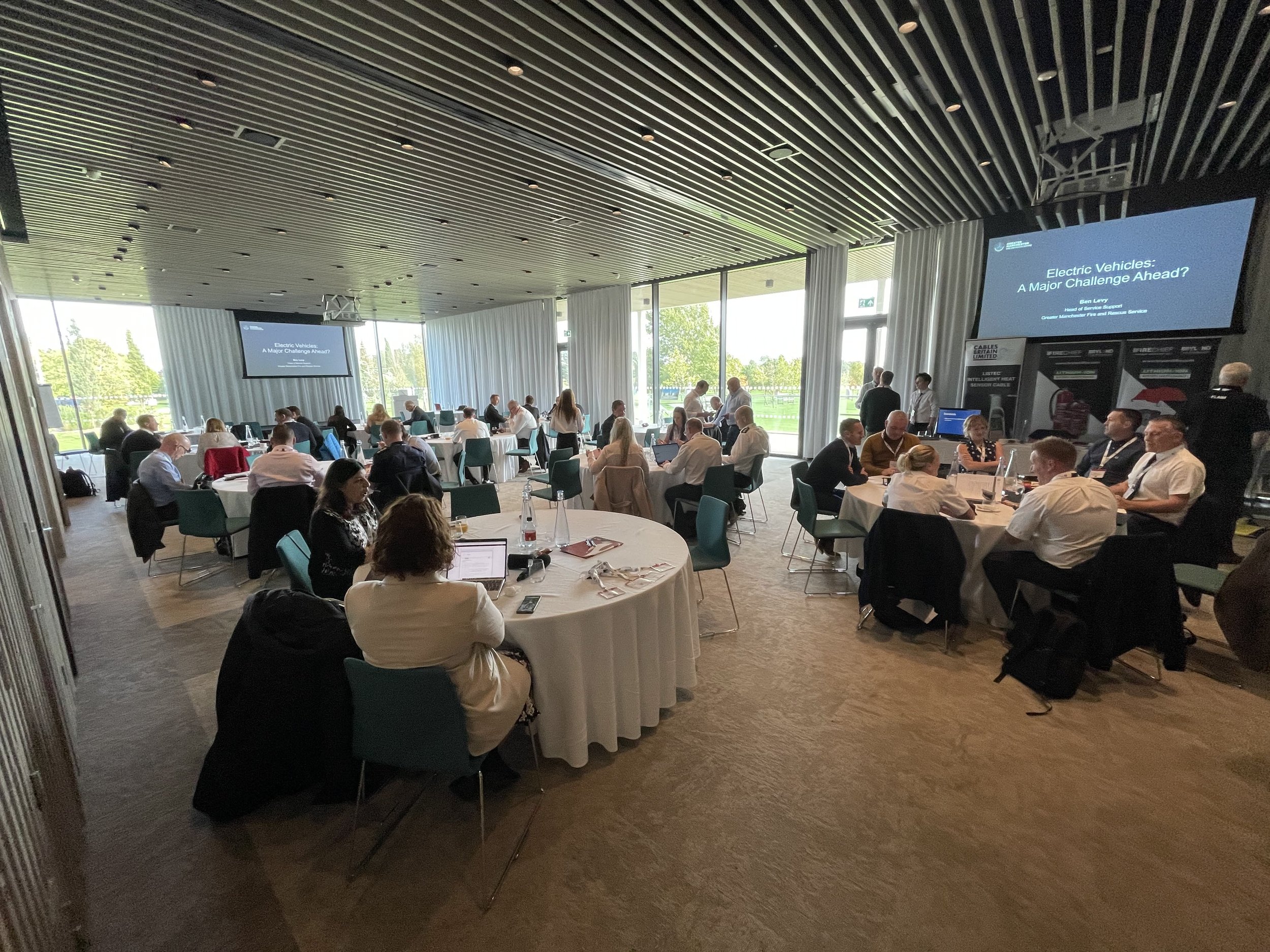Fire Chief blog
This week our Technical Director of Lithium Battery Recycling Solutions did a Keynote presentation at the National Fire Chief Council Conference at the National Memorial Arboretum on the latest recycling techniques available in the UK for Lithium Batteries and detailed where he has previous experience in dealing with fire damaged ones.
The overall focus on the day was the unwelcome increase in fires at waste collection sites that are started by damaged Lithium Batteries. Which is being monitored by the Fire Brigade who are very much at the front end in dealing with the aftermath.
There were some good quality presentations during the day from Fire Brigade representatives that showed the dangers that are present during a Lithium Battery fire, and it was widely understood that something very small, like an e Cigarette, has the potential to cause catastrophic property damage and even worse harm waste operatives working at recycling plants.
The CEO of SIMs metals gave a great presentation about how their sites have adopted a zero, 2, 5, 20 concepts in dealing with fires and have been able to focus on the immediacy of dealing with fires either through manual alert or automatic fire safety systems linked to a high-pressure water hose. The concept was developed with Pack Attack, a company led by Tony McGurk CBE who has a long-esteemed career with the Fire Brigade and is now running a company supplying innovative fire suppression aids and training. The Zero, 2 5, 20 concept breaks down what is feasible as soon as a fire is discovered and represents what could safely be done at zero, 2, 5, 20 minutes following a fire starting.
The problem of hidden small LiBs like e Cigarettes was highlighted by several of the presenters as it is very difficult to detect these in the collection vehicles, skips or bulker vehicles which could bring many tonnes into a site. There were several case studies and CCTV to demonstrate that most fires start very small but acting like a firelighter a small LiBs does not take long to spread a fire through dry combustible materials like waste piles.
This was highlighted in a presentation given by the ESA who are just about to send out their ‘Zombie Battery’ campaign under the Take Charge strategy. This highlights an image that placing what are thought to be dead batteries in the normal waste stream by householders and industry can lead to significant fires as the batteries subsequently come alive again.
This is good timing in October with Halloween just about to be celebrated but the message is to continue as the issue is a constant threat to waste managers.
There was also a good amount of information in regard to the latest fire aids like fire blankets to help with LiB fires especially from Electric cars which, as was shown in Alan’s presentation, quantities are set to increase dramatically over the next few years creating more opportunities for accidents to happen; something very much a concern to the Fire brigade as we’ve not yet seen a 5 car pileup consisting of EV cars and what that would look like to deal with.
Alan also spoke about the support Lithium Battery Recycling Solutions can give after a LiB fire has been put out. He’s had a good deal of experience dealing with damaged batteries and has some key steps to help make the collections as safe as they can be prior to final recycling.
Overall, a very good day of discussion and debate on the rise of waste batteries causing fires and how to deal with them.

